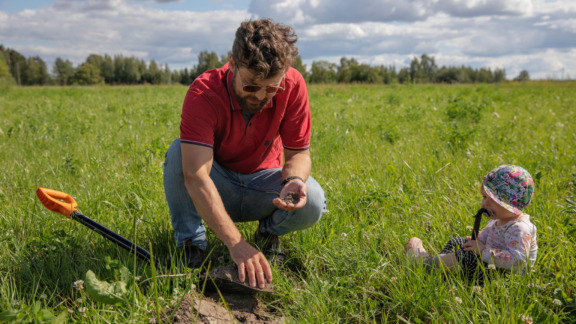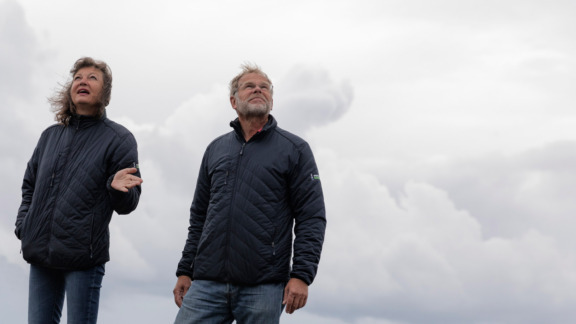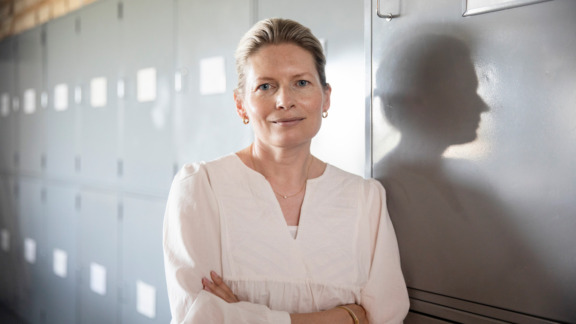“Decomposing back into nature is a good enough meaning of life”, says artist Teemu Lehmusruusu.
“Understanding that life is fragile can even increase our zest for life. We can see things as beautiful and wonderful even when they’re not self-evidently so,” says Teemu Lehmusruusu, 43.
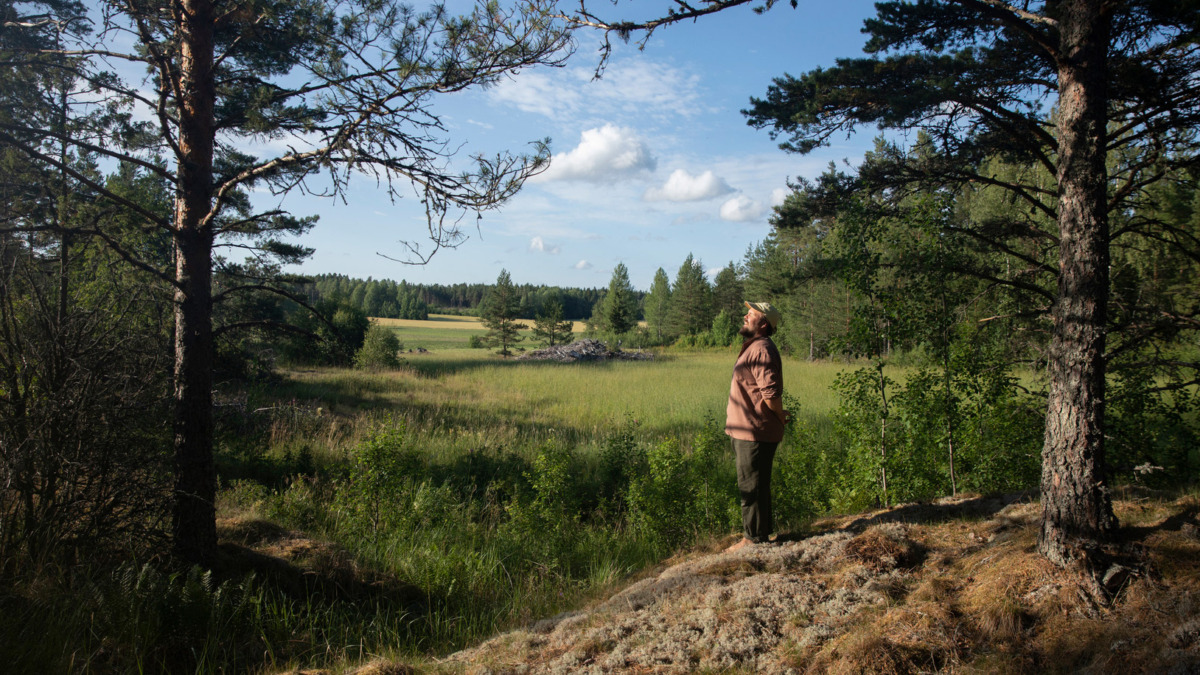
Text: Johannes Roviomaa
Photos: Miikka Pirinen
Lehmusruusu is a visual artist and doctoral researcher at Aalto University’s Department of Art and Media. His installation, Field Observatory, wason display during the summer on the island of Kirjurinluoto in Pori, on the banks of a pond in Hanhipuisto park.
The installation was a kind of underground weather station, where visitors could follow the various phases of the growing season and the changes that occur in the soil. A moving image was projected onto a clay sculpture in a log-framed structure built by carpenter Santeri Pöytäniemi.
Field Observatory received real-time data from fields on the Qvidja pilot farm – variations in the soil’s temperature, humidity and carbon dioxide content – which shaped the installation’s visual appearance and soundscape. The tones of a bass clarinet, a tuned grand piano and a baritone guitar guided the audience underground and through what happens in the soil.
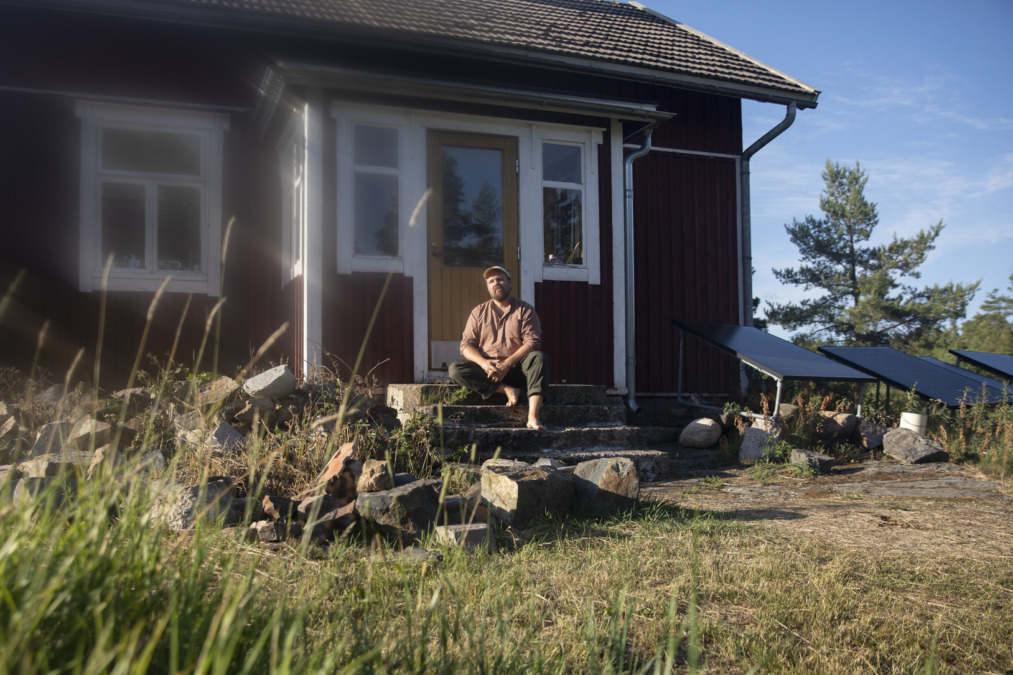
We got to the roots of the idea back at Lehmusruusu’s ‘process farm’ in the village of Labböle in Kimitoön. At Lehmusruusu’s farmhouse, we sit down in the living room and dive straight in at the deep end – death and art.
This work holds great meaning for its creator – “a kind of earthy mausoleum or burial place”. A temple-like place of silence.
“It’s about making peace with your own material cycle. Ultimately, decomposing back into nature is a good enough reason for living,” says Lehmusruusu.
One person who visited the installation said that the emotional experience was similar to that of “the Sistine Chapel”.
Located in the Vatican, the chapel houses world-famous frescoes painted by the Italian Renaissance artist Michelangelo: The Creation of Adam and The Last Judgment.
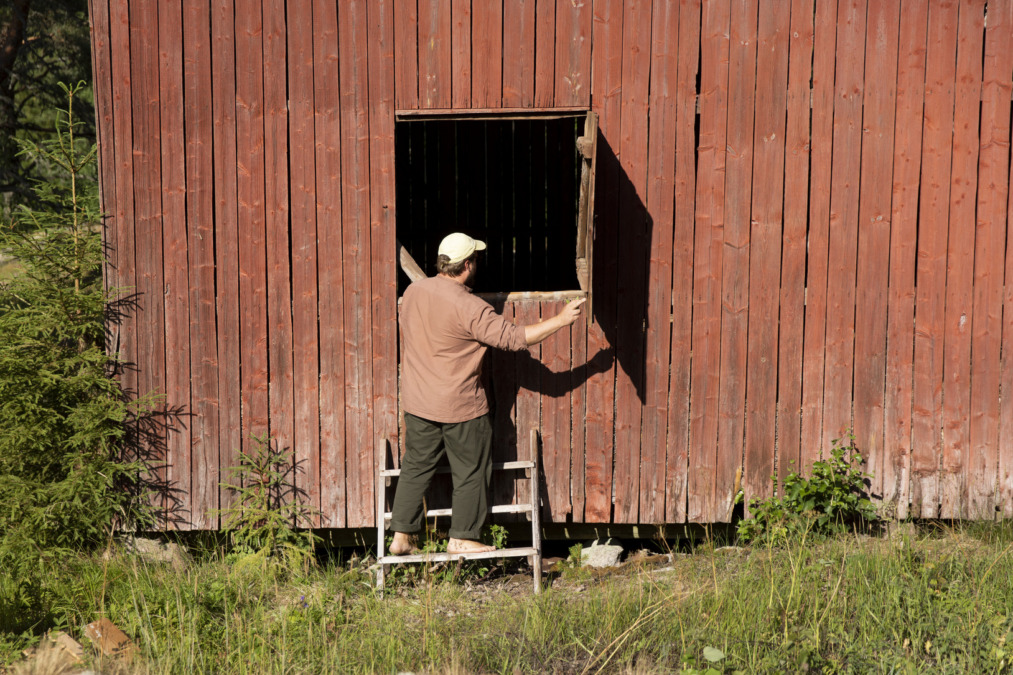
We go out into the yard to eat peas. We climb up a wooden ladder, which leads into the barn that provides the spatial model for the Pori installation. You have to duck as you enter, almost as if you were bowing. The barn is full of scrap wood, rusty old equipment, and piles of planks. The roof is made of surplus cutoffs.
“This is like a portal that helps you to see the present better. It was once in daily use, but has now been abandoned – and has a slightly apocalyptic atmosphere.”
We walk from the farmhouse yard to the edge of the gorge, which is only a stone’s throw away, and watch the flowing ditchwater.
Lehmusruusu studied political science at the University of Helsinki and photography at the University of Art and Design Helsinki (now Aalto University).
He says that it was the teachings of German artist Hito Steyerl in Berlin that had the greatest impression on him during his art studies. It was then that he became interested in combining a variety of hybrid forms in his art.
And he’s still on that path today. It’s no wonder that he became an artist who approaches environmental themes through multidisciplinary art. Lehmusruusu has been working closely with soil and climate scientists for the past four years.
His interest in soil was first awakened during hiking trips through Finnmark, northeastern Norway, and Iceland.
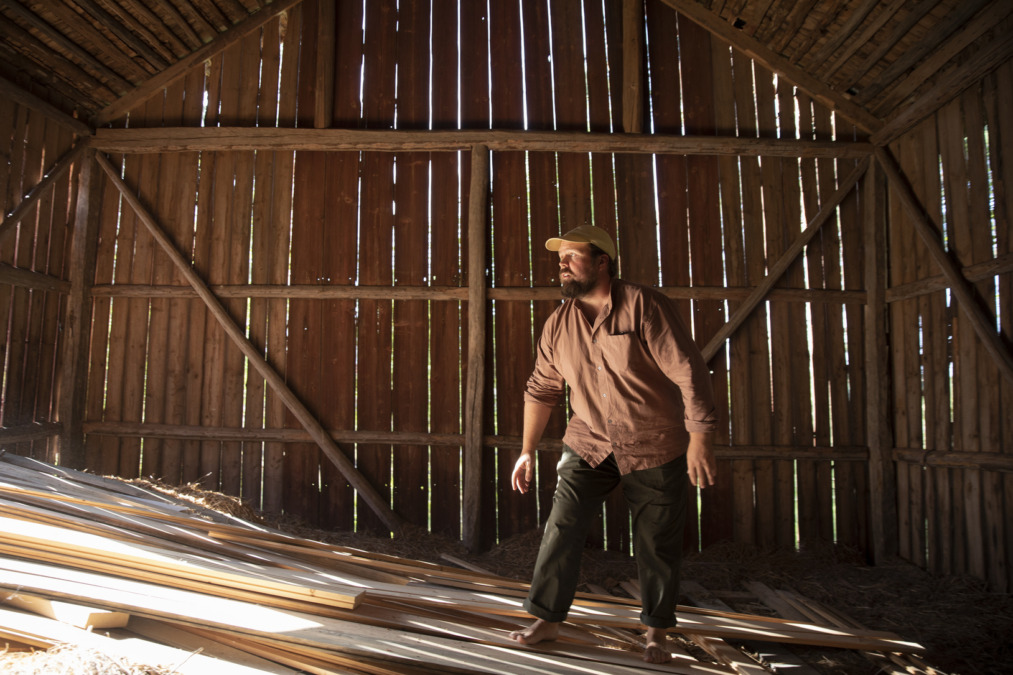
“I’m interested in the concept of a rocky planet that has somehow miraculously acquired a thin skin – the soil on which the cycle of life is based.”
Lehmusruusu’s farmhouse is a fountain of creativity and relaxation. A kind of art laboratory that he visits all year round with his family, that is his partner and two children, aged six and nine. It’s surrounded by a former commercial forest that is no longer disturbed. The neighbourhood is home to poets, musicians, and visual artists.
Lehmusruusu says that when he sees a fallen tree rotting in the forest, he thinks of it as a new home for decomposers. He would like to plant a forest garden in his yard, where he could grow a mix of fruit trees, shrubs and flowers.
“Decaying in peace is a luxury these days. We’ve all become blind to what we stand on.”
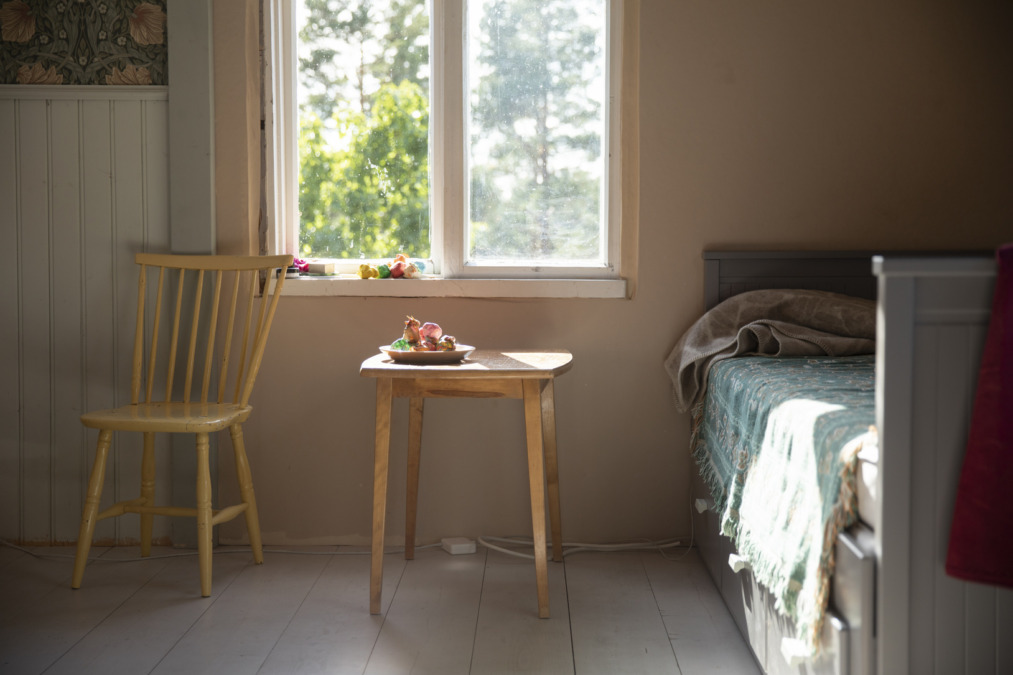
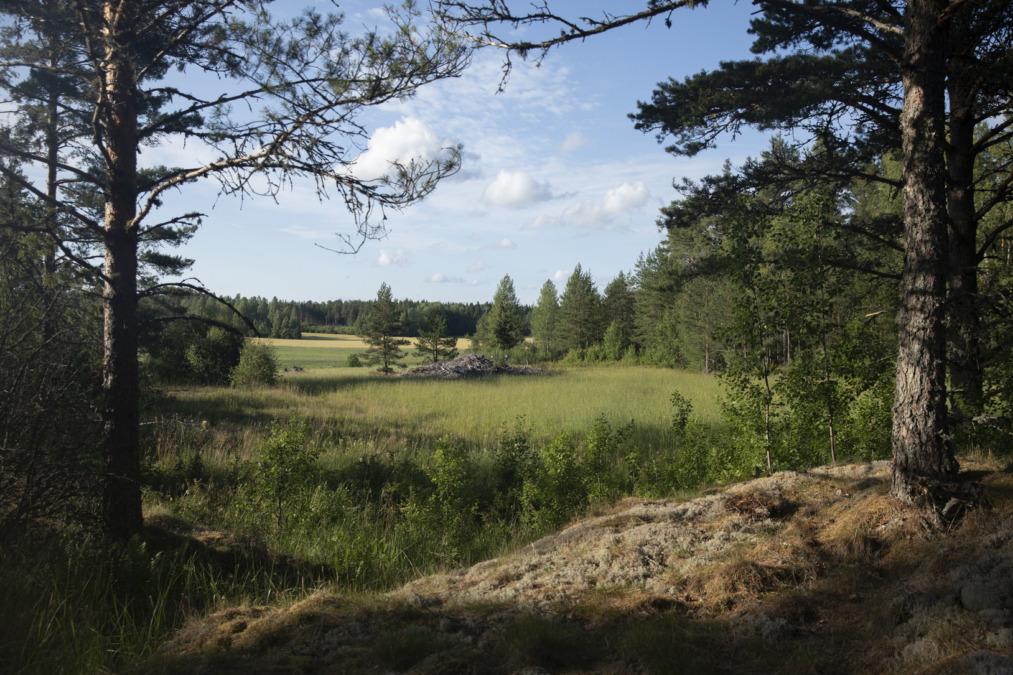
In 2017, Lehmusruusu’s light installation The Earth Beneath our Feet was projected in the House of the Estates Park during the LUX Helsinki Light Festival. It included poems by Pauliina Haasjoki. The installation was inspired by the idea of a young astronaut heading out into space to observe our rocky planet from the outside.
“Haasjoki’s poems resonate very strongly with the same phenomena. The installation was a way to create a space in which people could experience dystopia and utopia, belief and disbelief, hope and hopelessness.”
During the light festival, Lehmusruusu met Juuso Joona, a farmer and researcher from Joutseno who is a forerunner in regenerative farming in Finland. They chatted and exchanged contact info, and Lehmusruusu got hold of a bunch of scientific articles on regenerative farming.
This sparked off the idea for a collaboration that eventually became the Trophic Verses project. Trophic Verses combines art and science and received a four-year grant from Kone Foundation. A book of the same name was also published and edited by Lehmusruusu and Saara Karhunen. It’s a collection of ideas about soil from researchers and artists.
Over the four years, Lehmusruusu and his team engaged in dialogue with farmers, artists, and climate and soil researchers who were active in the Carbon Action initiative. There were farm visits, discussions, and projects that combined science and art, emotional experiences, and research data. This collaboration is still ongoing.
“I haven’t met anyone in this context whose work I didn’t appreciate. We’re all facing the same unknowns.”
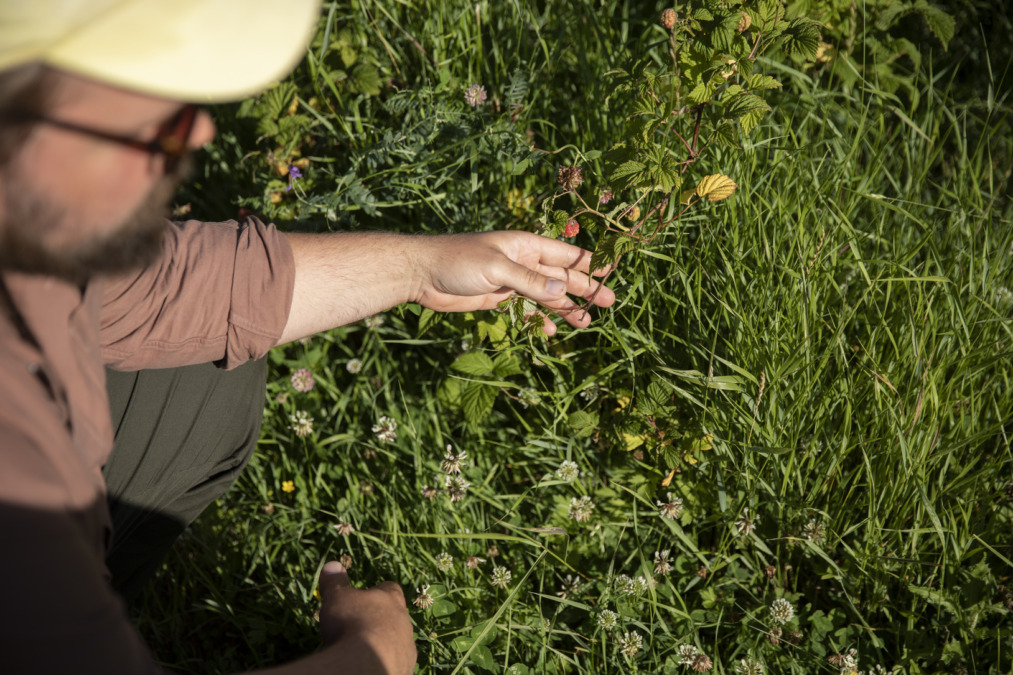
Lehmusruusu says that he’s not trying to become a biologist or a soil or climate researcher. The most important thing in his artistic work is to keep new kinds of experiences “as pure as possible”.
“I have a compelling need to connect with what’s going on beneath the surface. But this doesn’t mean I need to understand the chemistry of the soil one hundred percent. Every human being has the right to have a relationship with the soil.”
“Sometimes a single thought or feeling can kindle an artwork – and help define something for which we can find no words,” says Lehmusruusu,
And this is where art’s real potential lies: you can observe the world and the nature of being human from many different perspectives with all of your senses – and also develop them. Artists can decide for themselves how much research they should do.
“My work is closely connected to environmental emotions. Art can examine dimensions that tractor catalogues don’t reveal.”
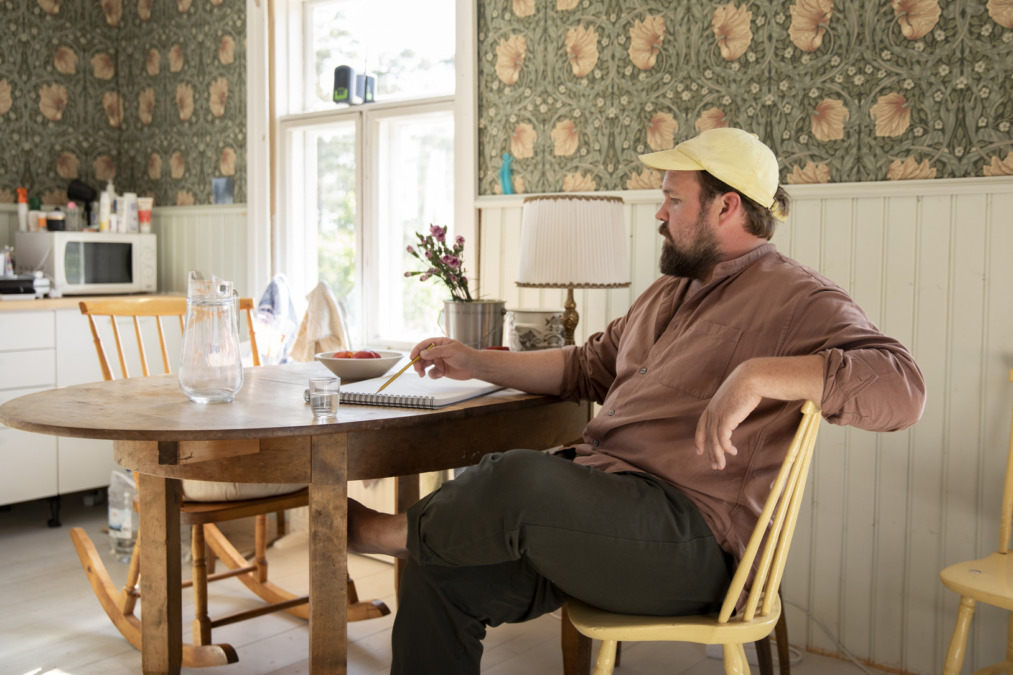
He is also fascinated by the idea of combining environmental themes with magical realism and mysticism.
Lehmusruusu says that his visit to researcher–farmer Tuomas Mattila’s farm in 2018 was one of the most fundamental moments in his life.
“Mattila told me that he calculates arable land in cubic metres, not just hectares. That shattered my concept of landscape art,” says Lehmusruusu.
These days, Lehmusruusu talks about extended observation, in which fields or forests are not just surfaces but volumes that involve both the natural sciences and existential questions. What is hidden in the soil, and how it smells, feels, and sounds during different seasons.
“Yet we still can’t quite grasp microbes, gases, or how the land flows into the sea.”
Lehmusruusu says that one of art’s functions is to ponder existential questions. And the most rewarding way to do this is to approach the concept of art in a very broad way.
“If I didn’t find this rewarding and meaningful, then I really couldn’t stand to be in this idiotic profession in which I’m always out of time and money,” says Lehmusruusu, with a small laugh.
Lehmusruusu has also reflected on “poetic activism”, which brings together research, art, and concrete participation.
“Different forms of activism can work over different time spans and affect people in different ways.
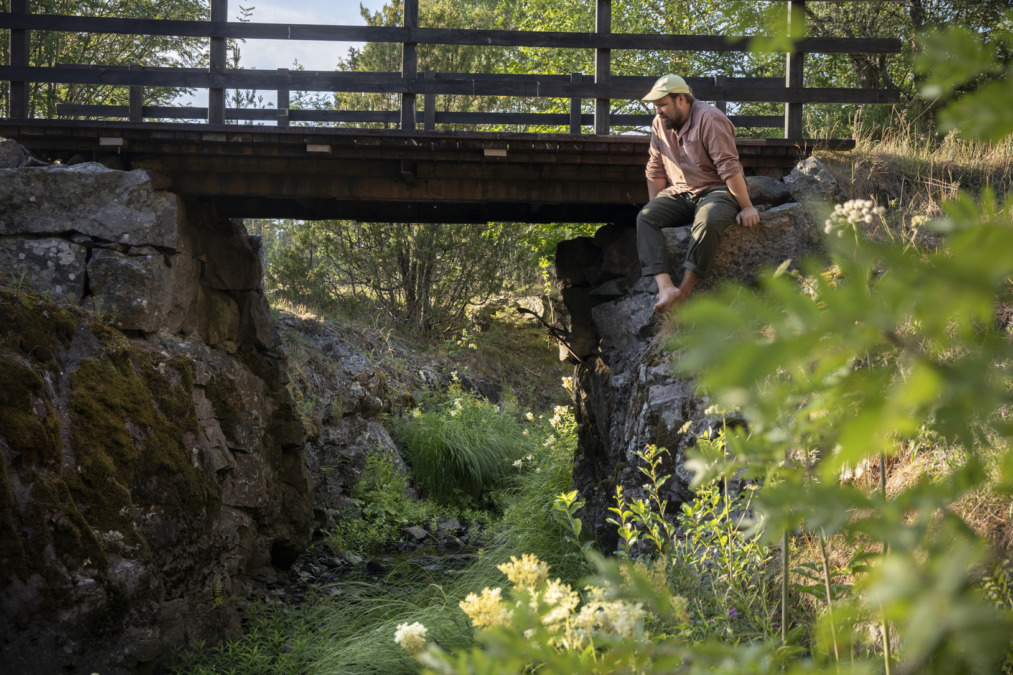
Can the Baltic Sea be protected through art?
Lehmusruusu dreams of “a great leap in cognitive evolution”. He hopes that people will be able to see nature “with the right weighting” and find meaning in caring for it. As one of life’s missions.
“Of course, we need political guidance, legislation, and regulatory nature conservation. But I hope that, on an individual level, a feeling of care would also generate meaningful ways of living on this planet.”
Alongside anxiety and hope, Lehmusruusu would like to see an understanding of the beauty and significance of our planet in which nature conservation would be self-evident and not something that needs debating.
And there should also be no need to hide or deny fear and anxiety over the state of the environment. Art can be a good tool for exploring these emotions. Researchers, if anyone, have strong environmental emotions that are rarely discussed. And they may feel as if they are left alone with their experiences.
“It’s very meaningful to interact with people who see things in the same way yet from a different perspective.”
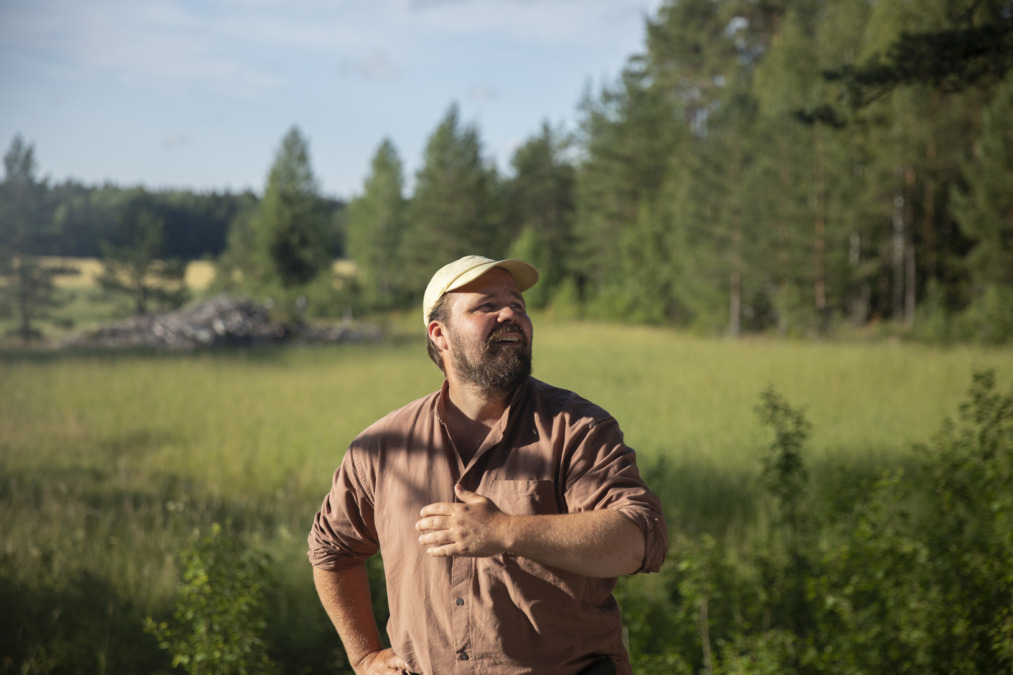
Last year, Lehmusruusu gave a speech at the 4 per 1,000 event organised by the Baltic Sea Action Group in Kalastajatorppa, Helsinki. The international 4 per 1,000 initiative encourages a transition towards sustainable agriculture.
Lehmusruusu spoke to researchers and stakeholders about his artworks and artistic practice.
Researchers, farmers, and activists came to chat with him after his speech. Members of Extinction Rebellion said that these kinds of artworks give strength to activism.
“You might easily think that anything other than direct action feels like a waste of time,” says Lehmusruusu.
Responding to our planet’s multiple crises also requires a broad range of approaches.
“All means must be employed,” says Lehmusruusu. Art, if anything, is regenerative: it renews our ways of thinking and being.”
In the Protectors of the Baltic Sea -article series, we dive beneath the surface, visit the largest marine conservation area in the Archipelago Sea, take a ride on a farmer’s tractor, travel on a cargo ship, and talk to an artist and an entrepreneur.
Johannes Roviomaa (b. 1991) is a journalist, screenwriter, and visiting researcher at the Arctic Centre. He specialises in climate change, the Arctic region, and the food system. Along with his team, Roviomaa has received both the State Prize for Popularization of Science (2018) and the Kanava Award (2017).
Miikka Pirinen (b. 1985) is a documentary photographer who works for Finnish and international clients. He has won six awards in the Press Photo of the Year competition. Pirinen has documented workers in the fossil mining industry as part of a non-fiction book about fair transition, Likainen työ (Dirty Work) (Like, 2023).
